Mecca. Part Two. Citadel
The entire life of Mecca is concentrated around the city center, where stands the Forbidden Mosque. It is currently the largest mosque in the world, but once it was a modest rectangular fence surrounding the Kaaba.
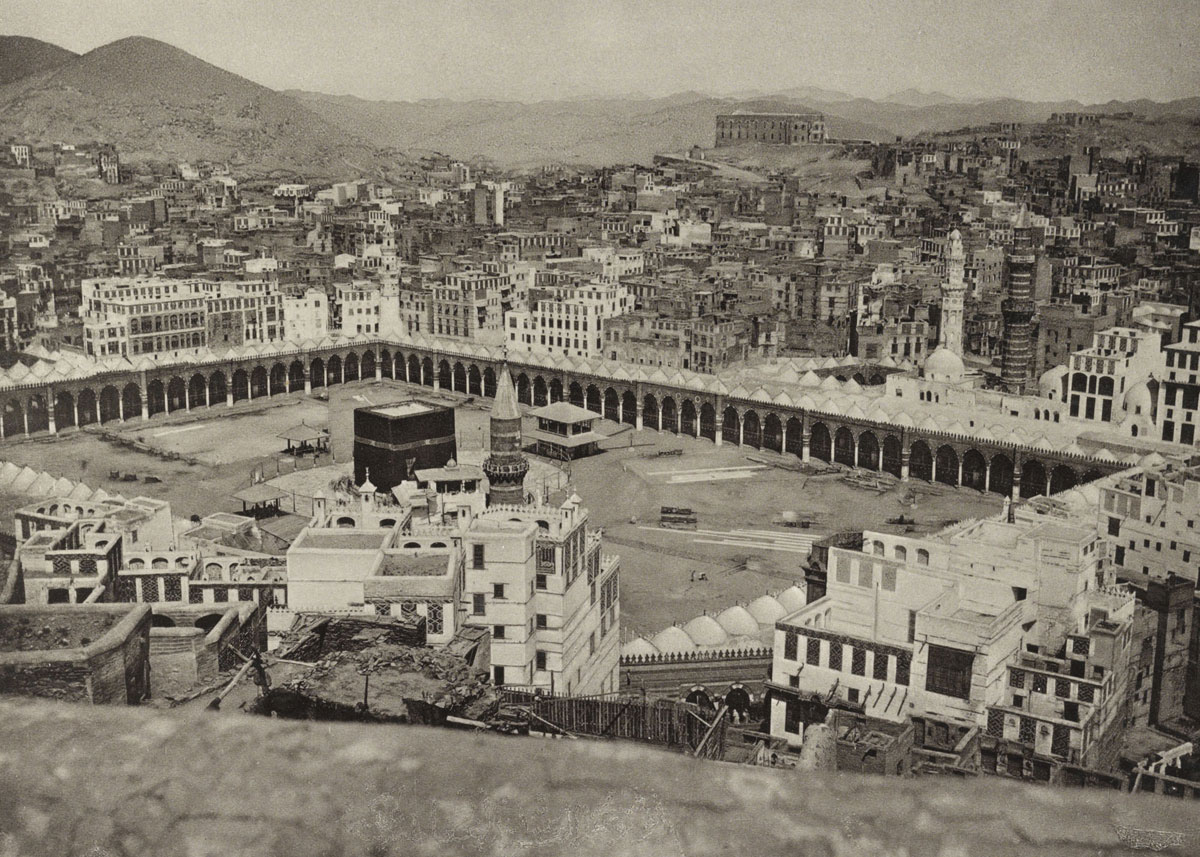
With the rise of Islam at the end of the 20th century, more and more pilgrims began arriving in Saudi Arabia. The old mosque could no longer accommodate the people, so it started to expand. The area around the Kaaba remained very small, but the new mosque turned into a monstrous multi-story structure.
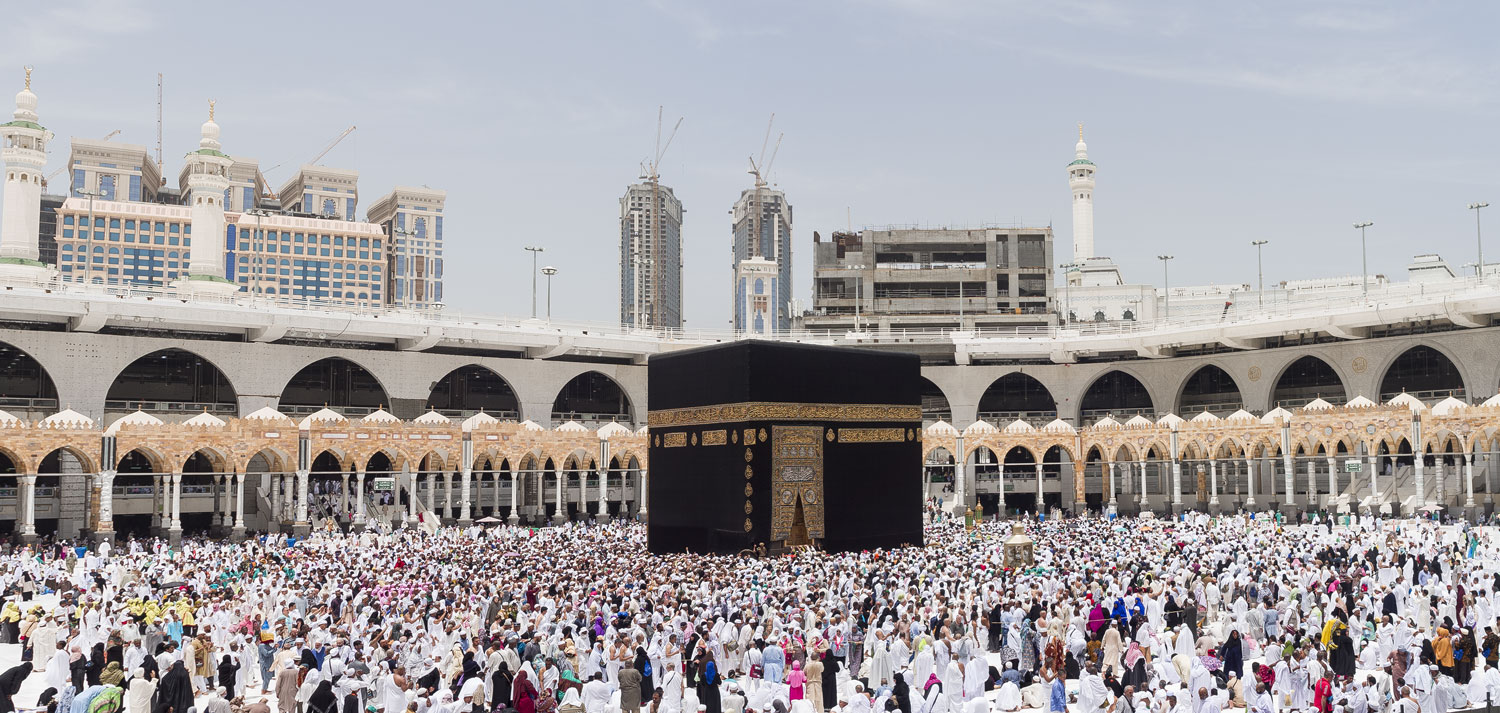
The Forbidden Mosque is purely utilitarian. Its task is to accommodate as many pilgrims as possible and not to rip apart at the seams. In terms of beauty, it is not even close to the Blue Mosque in Istanbul or, well, any other mosque.
Two minarets at the main entrance are the only things left from the old architecture.
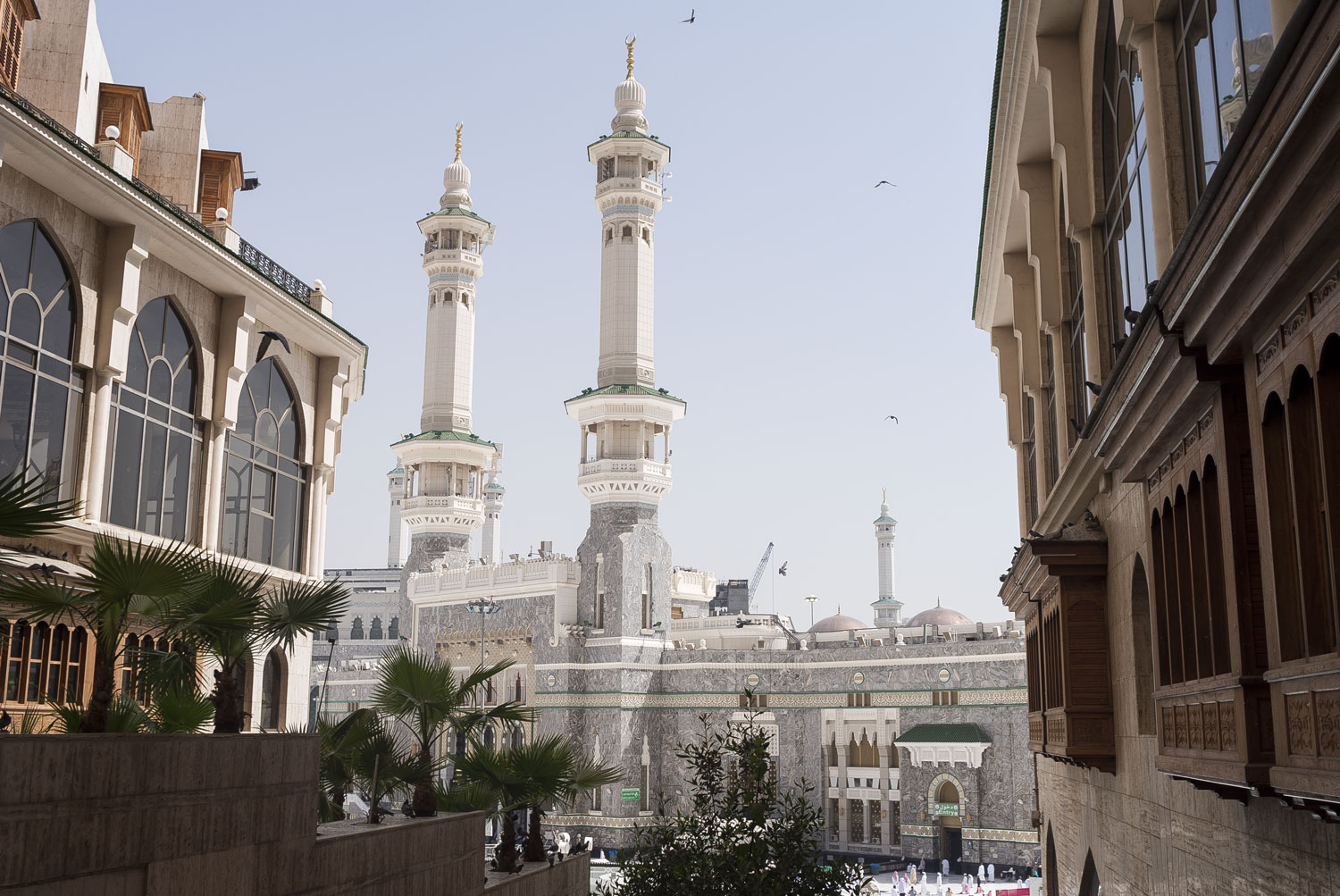
The decorations on the facade are primitive. Al-Haram is nothing compared to the mosques of Iran.
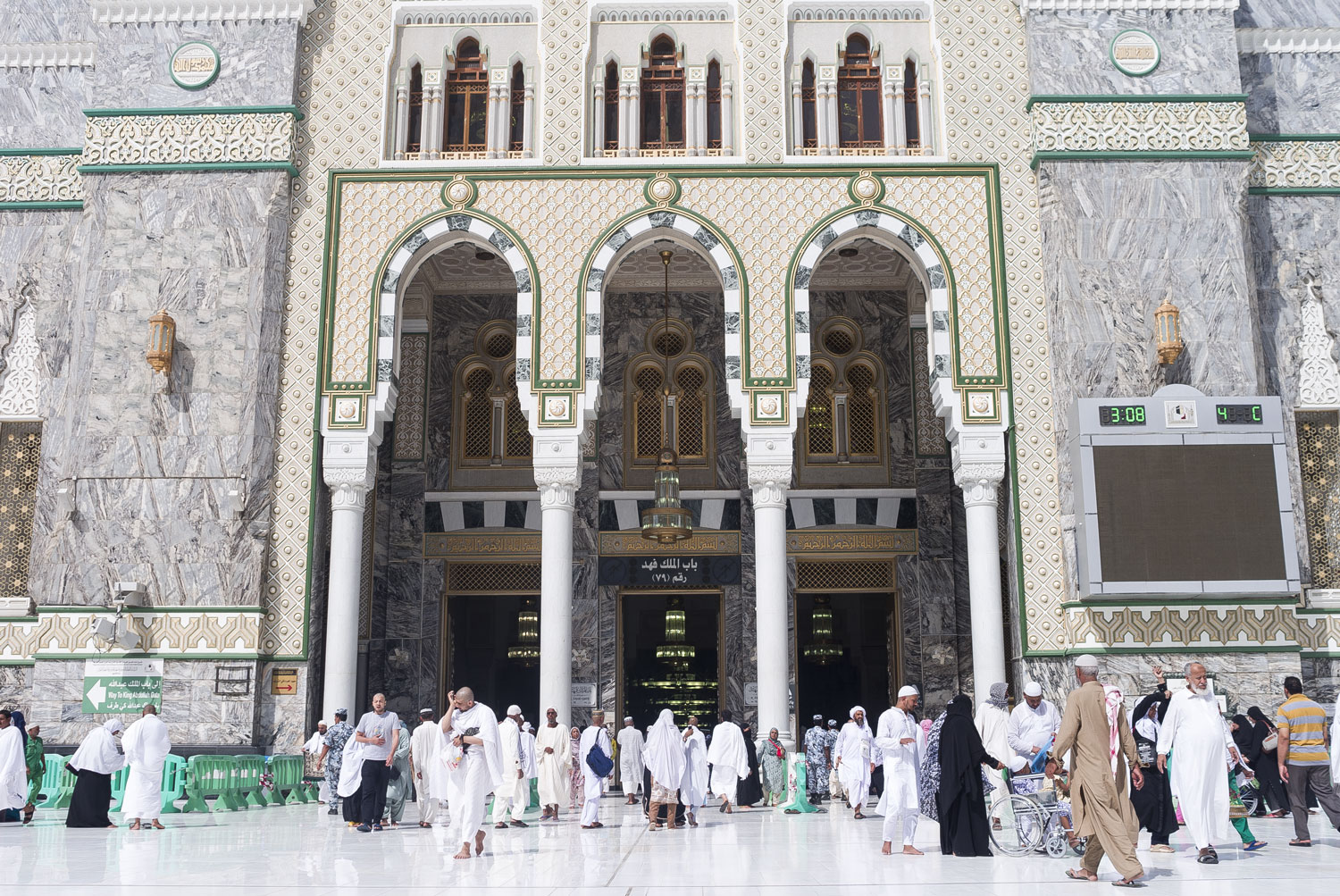
There is a small square in front of the mosque. When no more space inside, people pray on the street. Carpets are kindly laid out for them during prayer time.
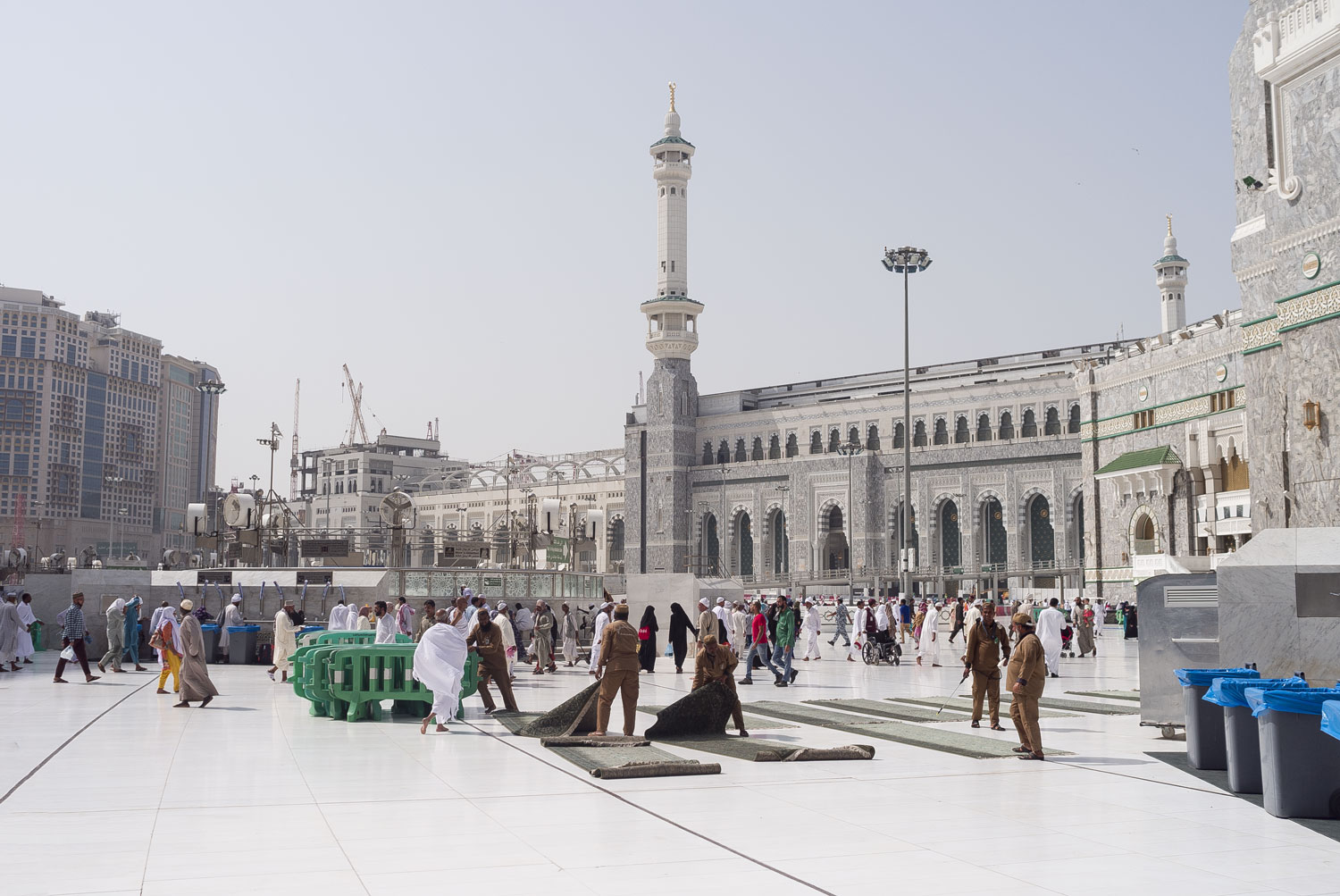
On the other side of the square, directly opposite the mosque, stands a termite mound of skyscrapers — can not be called otherwise. Formless, giant buildings crawl up to the sky with steps until they merge into the tallest tower. It is crowned with huge clocks and a spire on which is mounted a crescent moon.
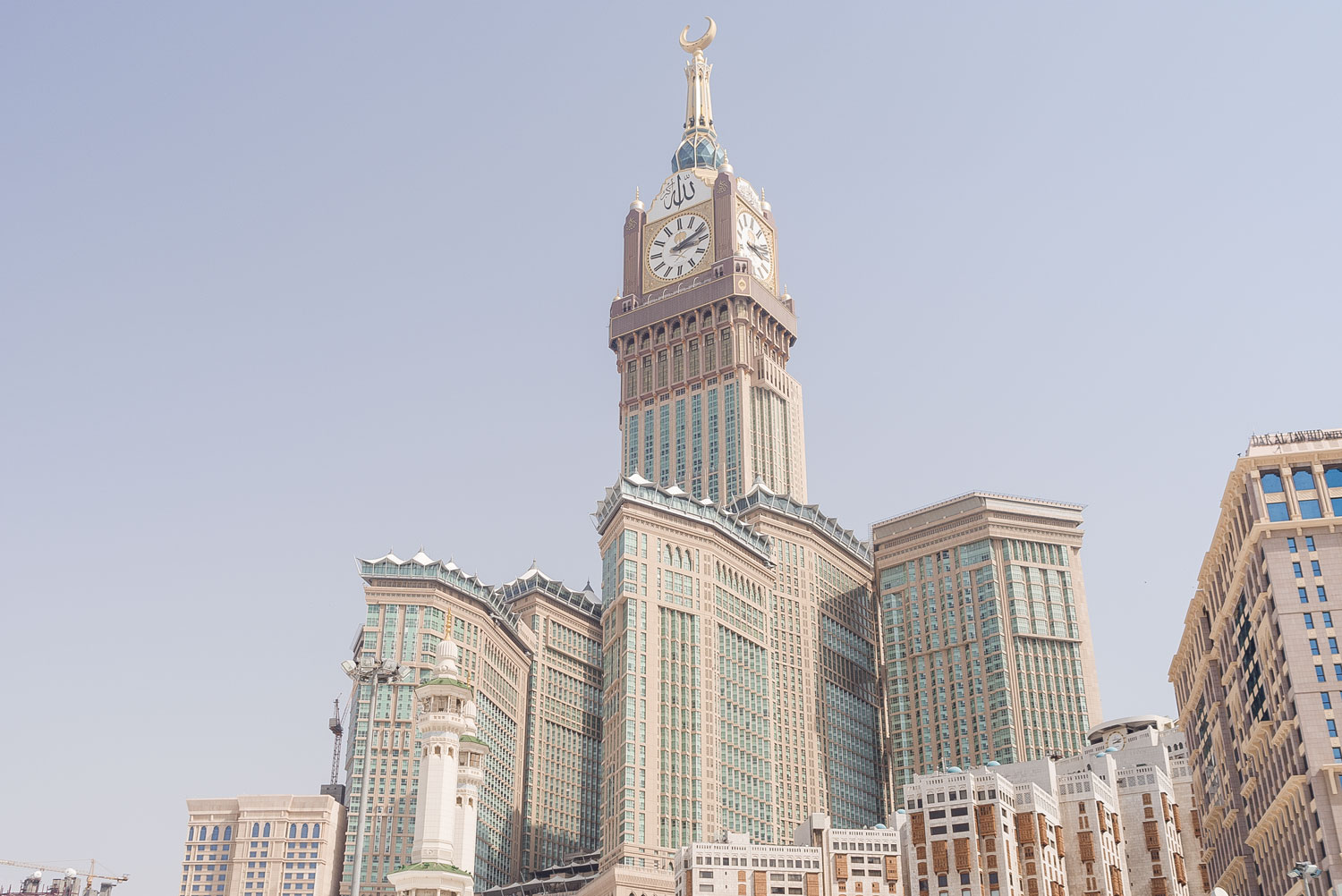
During the night prayer, the crescent-moon spire lights up with a poisonous green color.

Most of these skyscrapers are given over to hotels. Rooms here are already expensive, but during the Hajj season, the price increases many times. Hotel rooms are often bought by large groups and slept in like a hostel, four people each. However, the rooms themselves are luxurious. From the outside, the hotels try in vain to imitate the old houses of Jeddah.
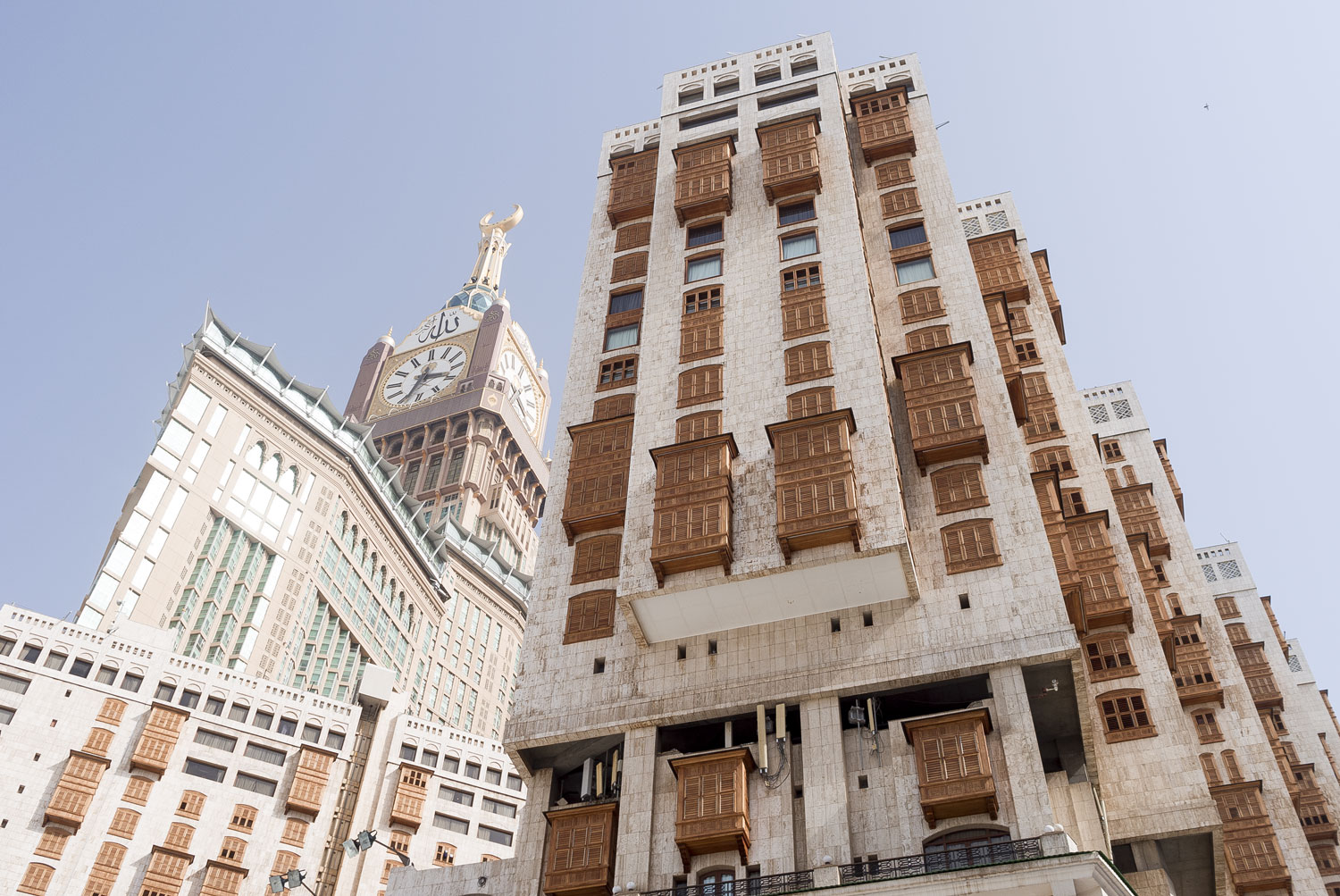
Mecca is covered with brands. When exiting the main gates of the Forbidden Mosque, the first thing pilgrims see is the McDonald’s logo.
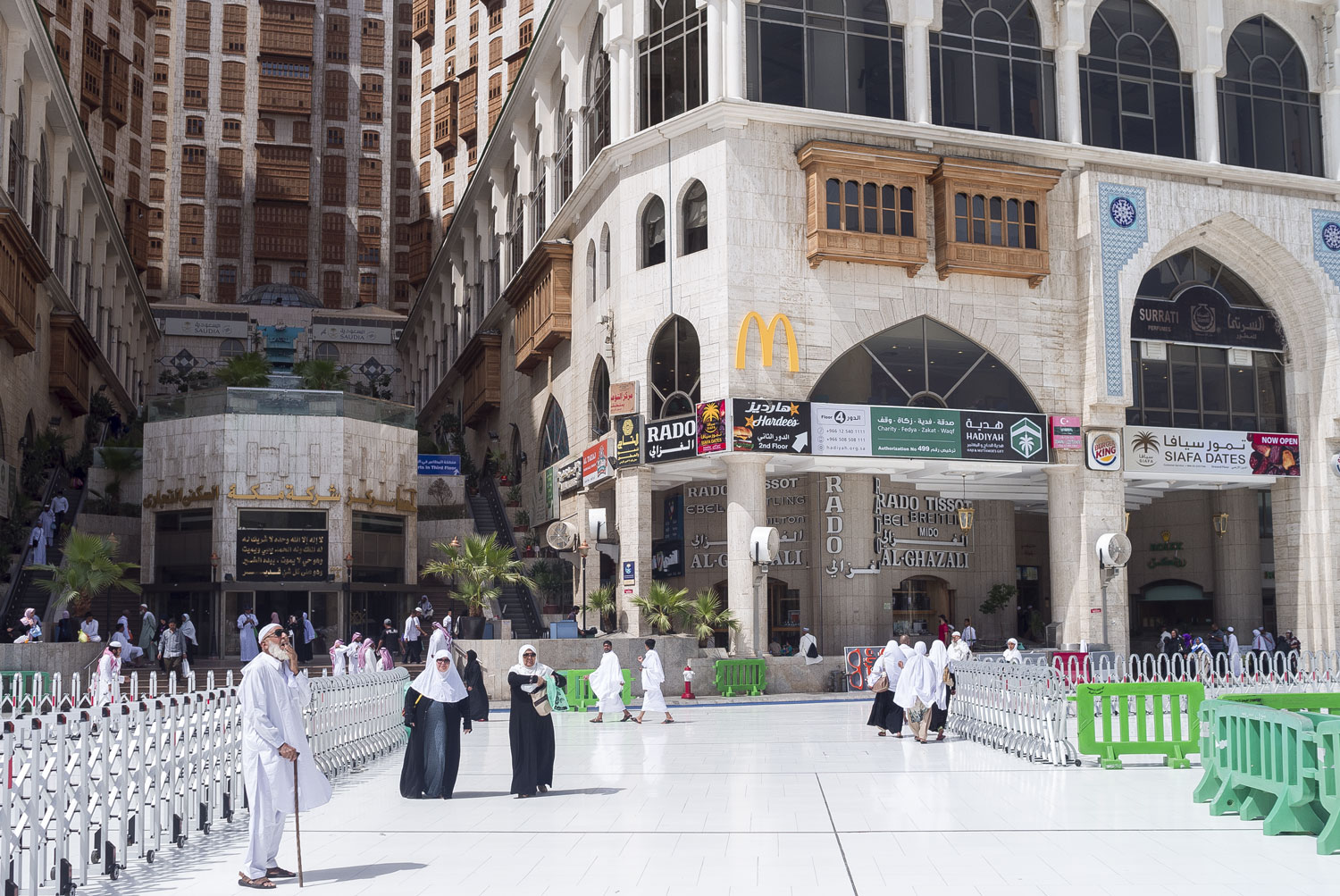
On the lower floors of the skyscrapers lies a huge shopping center where pilgrims stock up to the brim. The popular items include gold decorations and silk dresses, Rolex watches, gilded iPhones and MacBooks, Ray-Ban sunglasses, Louis Vuitton bags, perfumes from the wealthiest French companies, and of course, an endless variety of halal chow.
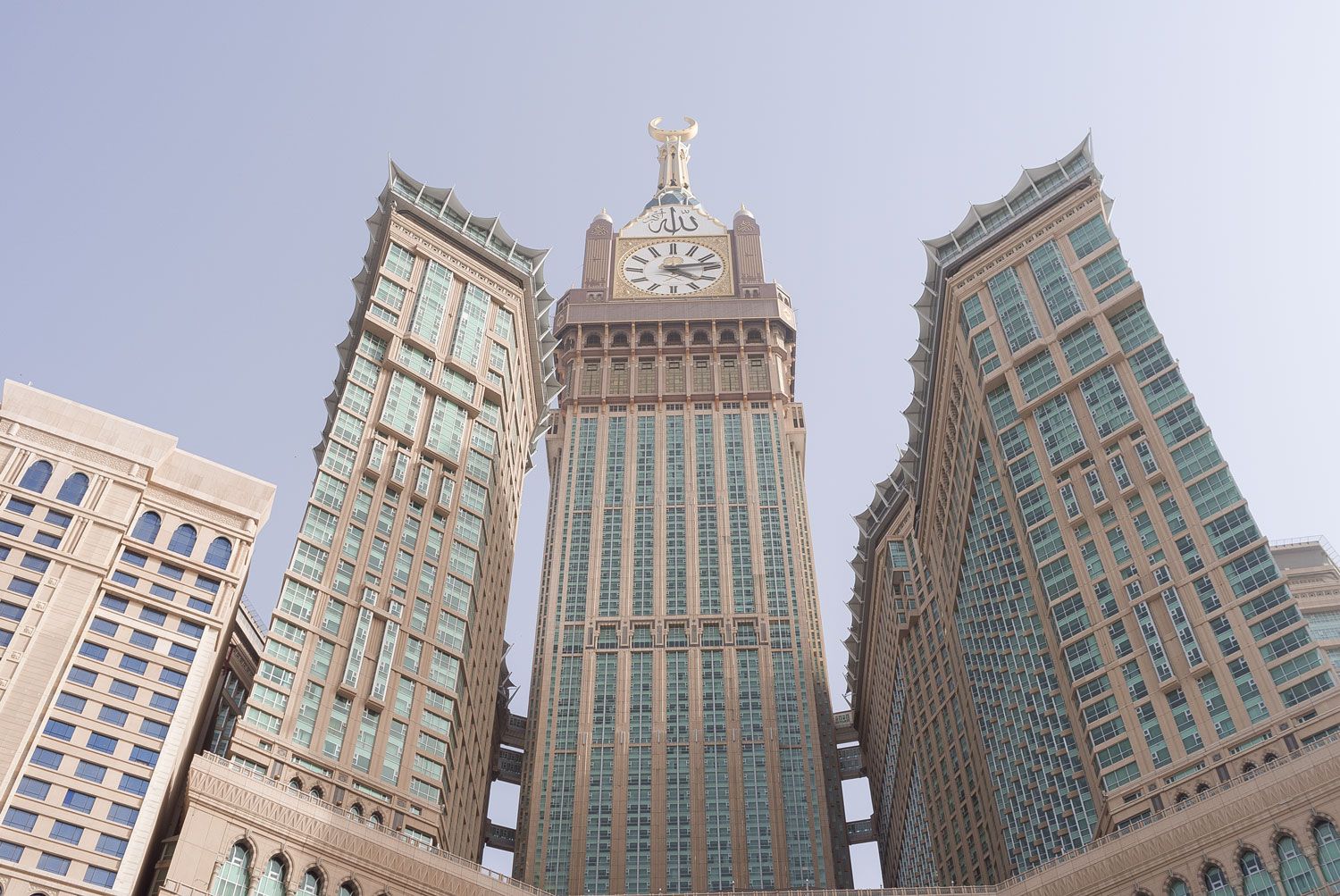
None of this is surprising. Islam grew up in Arabia, where trade is an essential part of culture. For a Muslim, it is normal to break through to the Black Stone crying “Allahu Akbar” and go shopping five minutes later.
Mecca’s annual revenue is $23 billion. No wonder, as the number of pilgrims coming for Hajj increases every year. Last time, 2.5 million people visited Mecca. The modest crowds shown in my photos are insignificant compared to the gravitational mass of people filling Mecca during the Hajj.
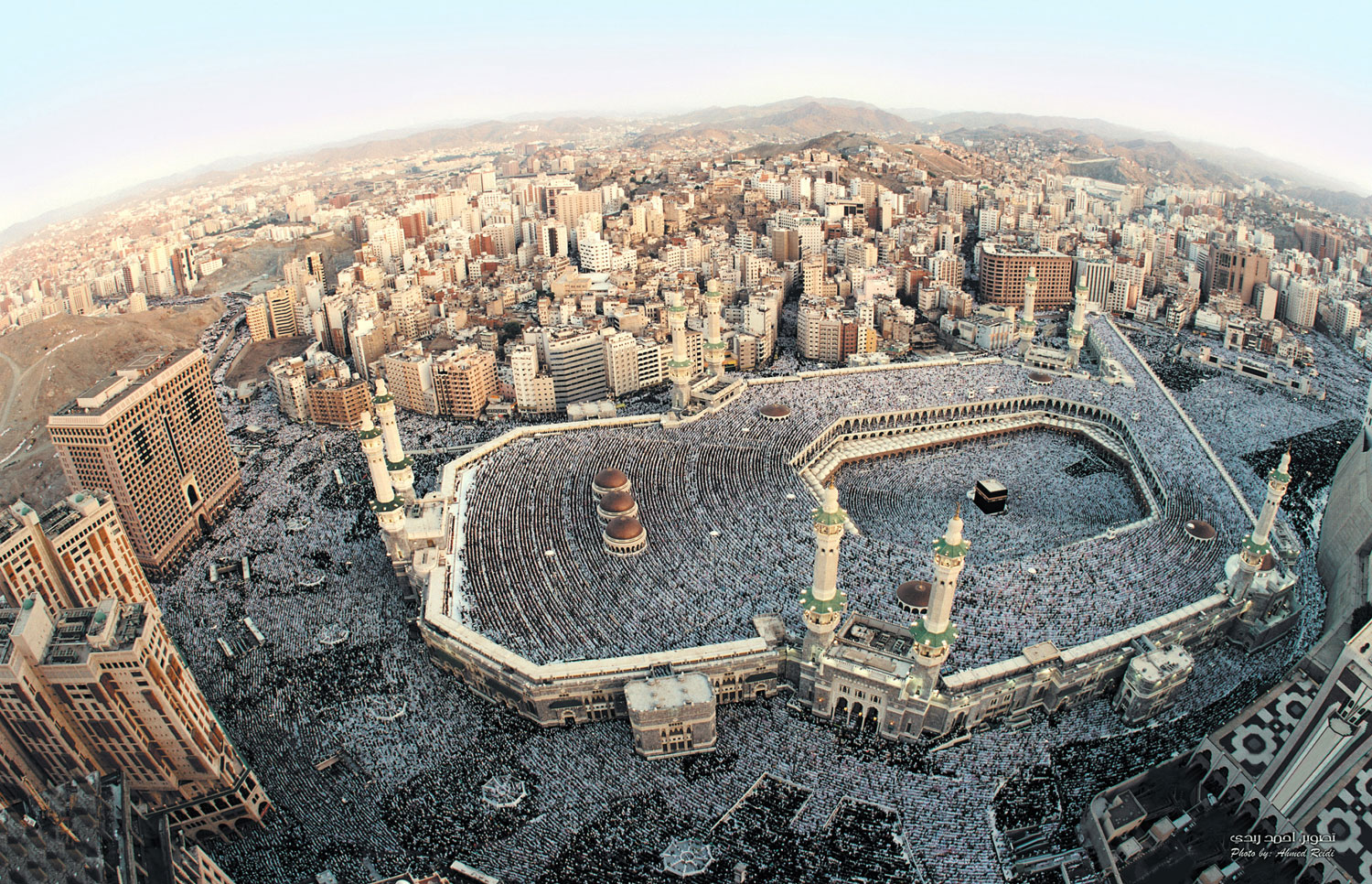
Hajj is a dangerous adventure from which one may not return. A few years ago, a crazed crowd crushed more than 2,000 people. An old man who bends down to pick up a fallen bag in the crowd will never get up again — he will simply be trampled. Not everyone is afraid to die during Hajj because such a death opens a direct path to paradise.
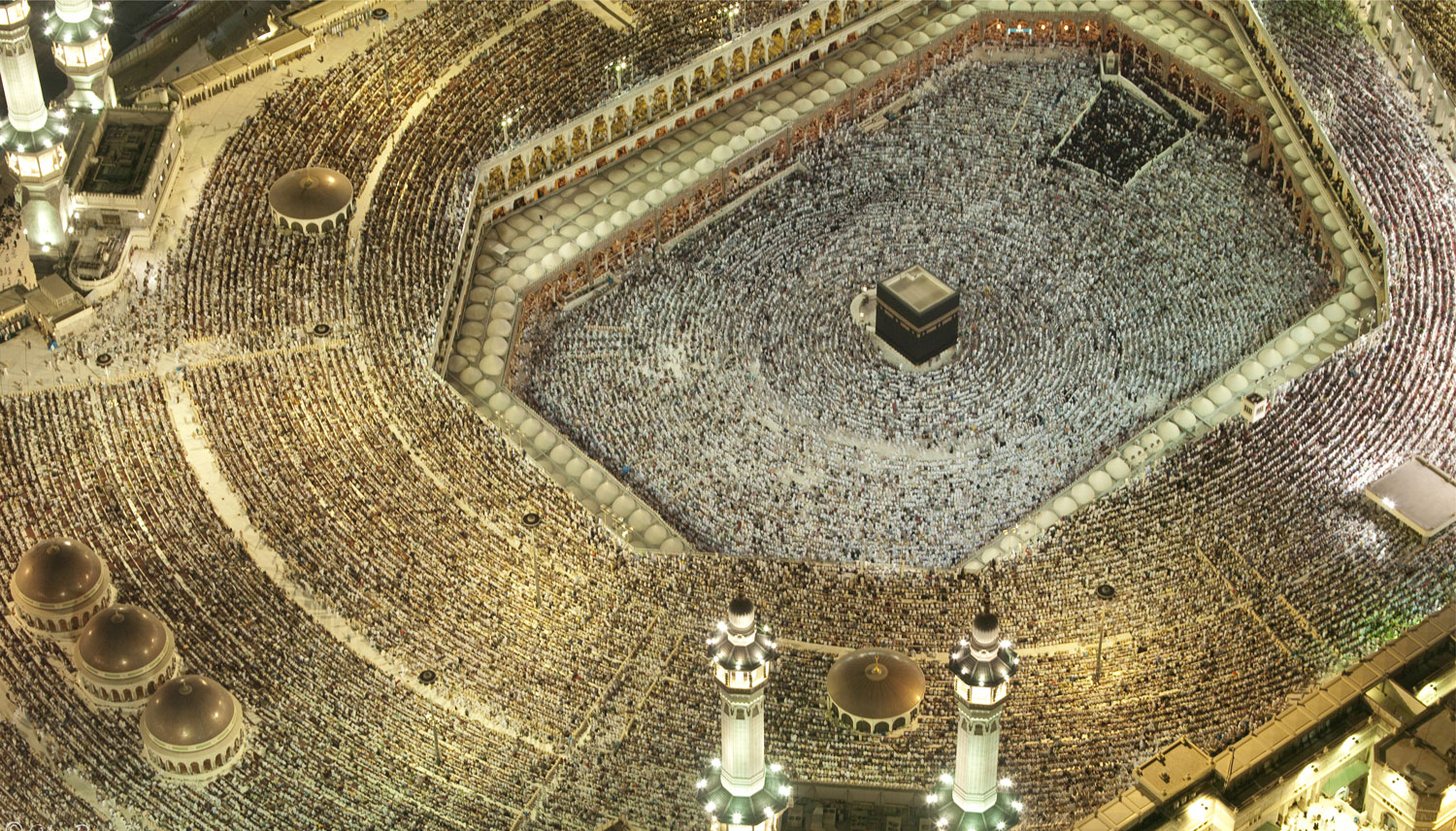
Ants
I climbed the skyscraper and went up to the observation deck of a restaurant. Mecca can be seen well from here, but not the Kaaba — only its very edge. It is not possible to go higher for now. They promise to open access to the clock later.
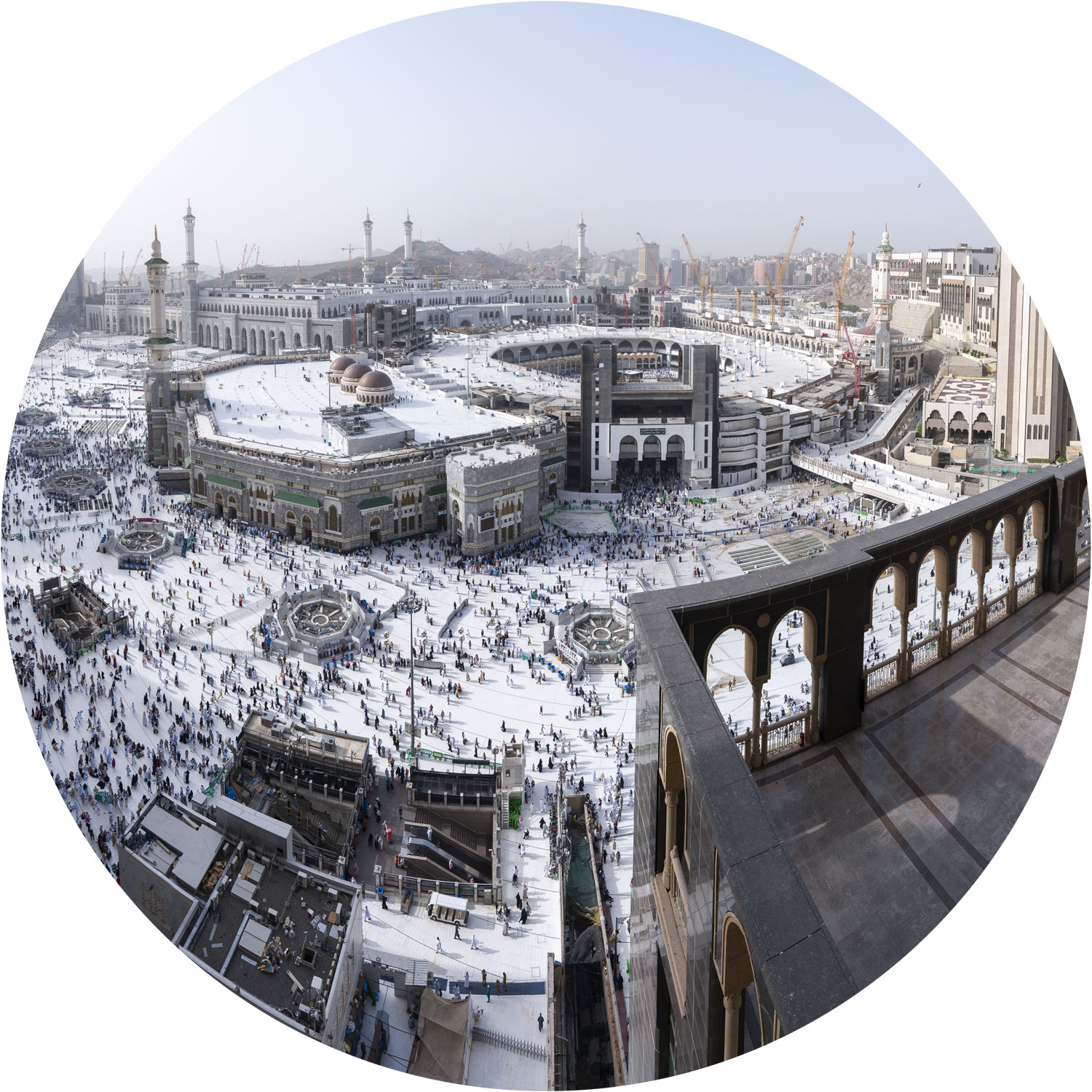
No other city looks as much like an anthill as Mecca from above. From the observation deck, I notice that people walking on the mosque’s roof. It must be possible to get up there. I climb down from the skyscraper and go in search of the secret passage.
People come for pilgrimage from all over the world. Here they mix with the local population. Mecca welcomes everyone. It’s just as much of a melting pot as the US. Skin color, nationality, and clothing make no difference here.
The residents of Mecca often wear traditional dress of a long robe and turban on their head. They spend many hours every day in the mosque praying and reading the Quran. While Islam requires five daily prayers, these guys pray much more.
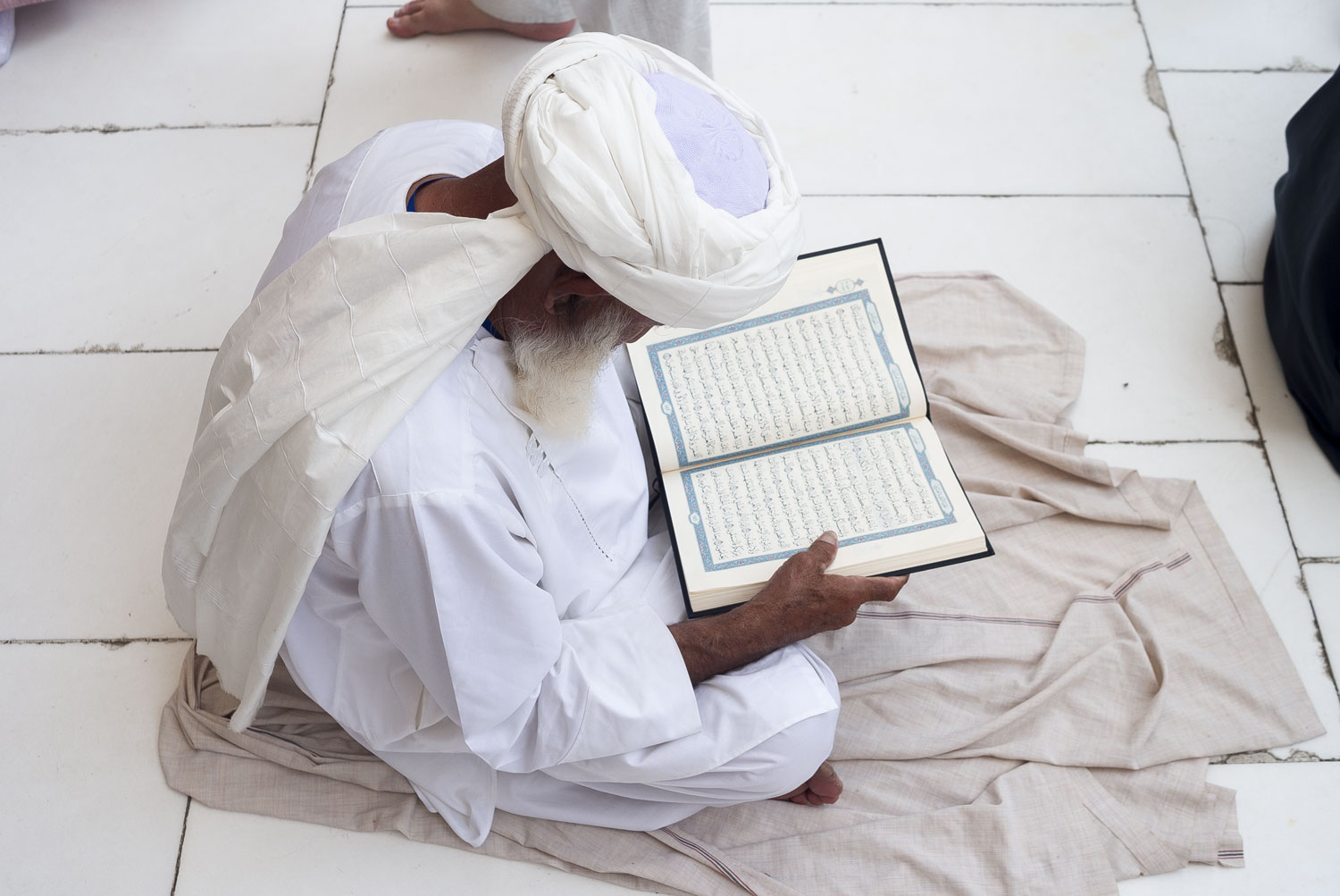
Travelers clothing differs. Some wear white Arab dishdashas, while others arrive from Pakistan in brown perahans.
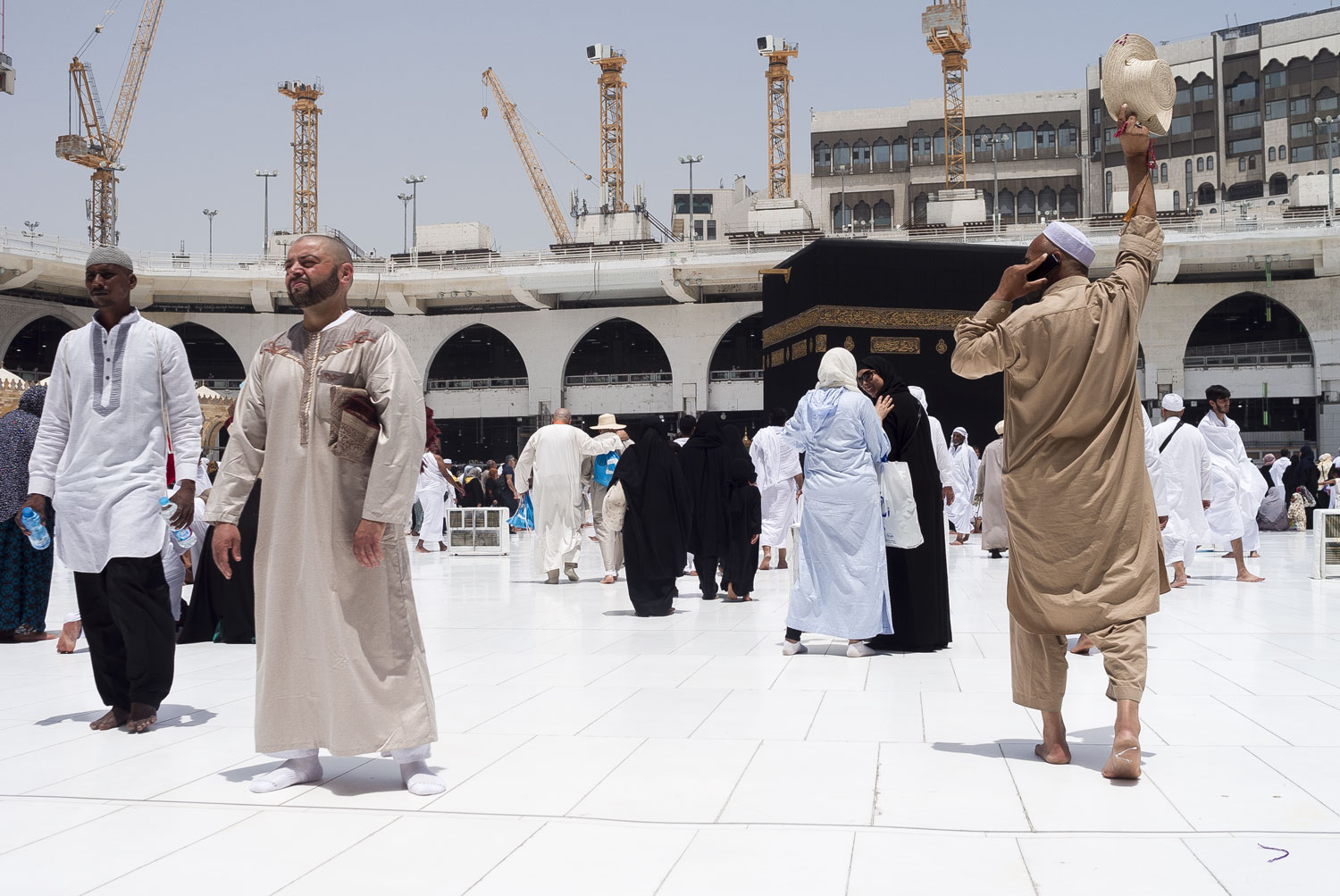
Simple clothes are worn after the pilgrimage. Up until, they wear ihram — the very towels wrapped around their bare bodies. Pilgrims dressed in such attire who just completed the Hajj or Umrah, Meccan merchants greet:
“Assalamu alaikum, Hajji!”
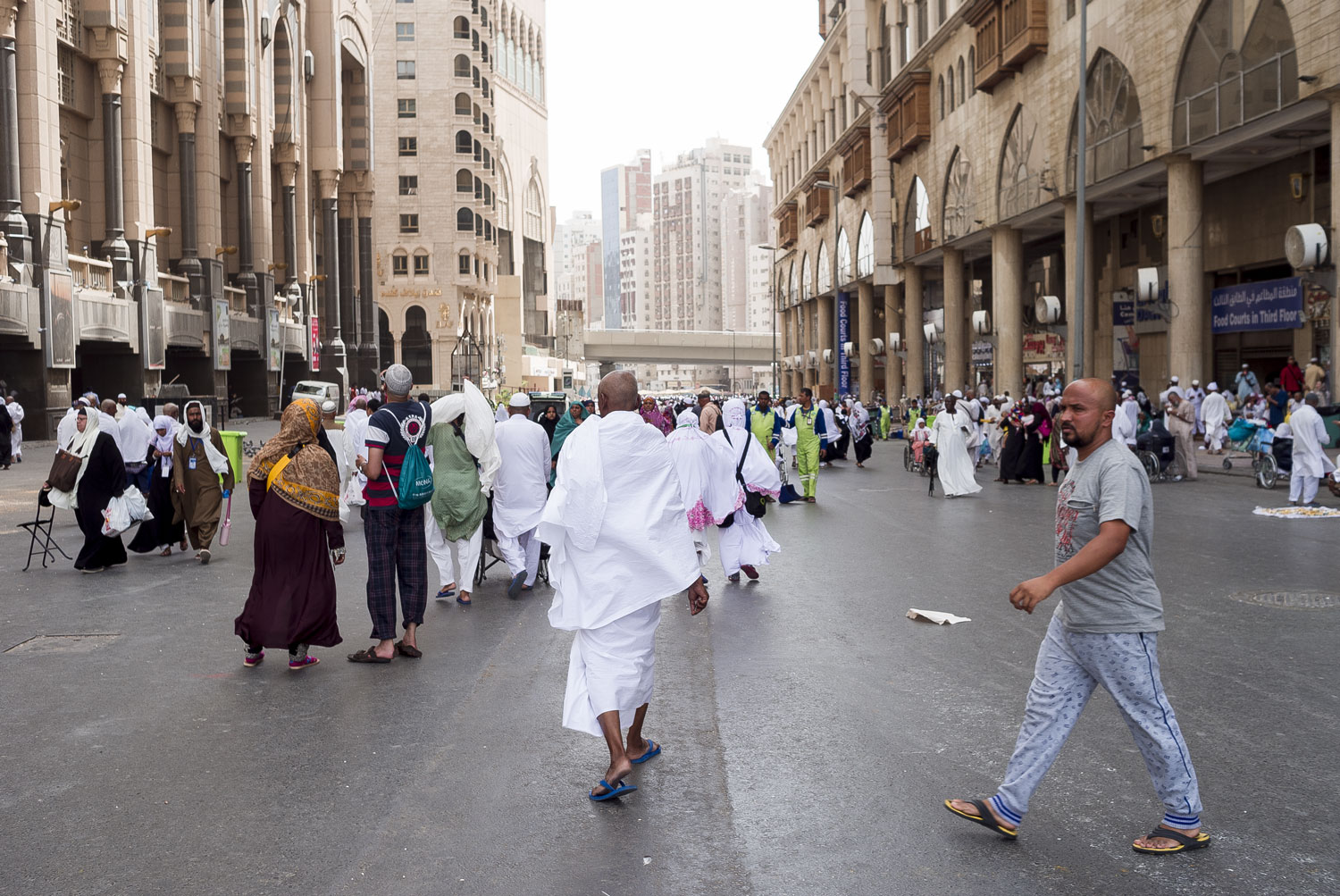
And right away offer a cheap haircut.
The thing is that after completing all the rituals, a pilgrim must either shave his head bald or trim hair by two phalanges of finger, depending on which Islamic school they belong to.
This is why those crowds of touts draw their duty outside the Forbidden Mosque, who are unlike anywhere else in the world. They offer not taxis or lodging, but hairdressing services! And they pursue every pilgrim who comes out of the mosque, bargaining and pestering all the way.
Resisting them is like walking through a crowd of taxi drivers in India. Everyone has a hairdresser friend who cuts better and cheaper than anyone else.
The majority of Muslims in Mecca are decent, devout believers. Among them are also many fanatics who are ready to kill for the right to touch the Black Stone. There is also a third caste — fallen sinners, whose arrogance makes even atheist’s eyes pop out.
A woman begs for alms at the local McDonald’s. She is refused, and she walks away to a corner where confers with five friends. They decide to try again and send a child to ask for money. Once somebody gives, a crowd of beggars flies up at once. Beggars. They can be understood.
But there on the second floor of the Forbidden Mosque, two people are: a man and a woman. They hold up a cardboard sign with marker that reads, “Stolen things and documents. Help get home to London.”
Oh Allah! How low must one fall to confuse Mecca with the Moscow metro? The two come up to me:
“Mister, can you help us get home?”
“I think the police would be better to help you.”
“We’ve contacted the police. Look, here are the documents confirming the theft. They can’t help us.”
The stubble on my face falls of in surprise. It’s clear that the story is made up and the documents are fake. But what do I tell them? I can’t accuse them of lying while standing just a hundred meters away from the Kaaba.
“I think you should ask them again. They must help, I assure you. Ask the police to contact the British embassy, they will give you money on bail. Ciao!”
But sooner I can reach the next floor, I encounter pickpockets. Someone taps me on the shoulder and I turn around. A friendly guy stands behind me:
“Hello! Which country are you from?”
“Russia, and you?”
“Iraq, my friend! Iraq!”
While the Iraqi was praising Putin, a figure flashed in my peripheral vision. I turned around and saw someone moving away from me. It was a minute later when I realized: while I was being distracted from the right, someone on my left was testing my waist bag.
The holy Mecca is closed to non-Muslims, but it would be better not to let thieves and scammers.
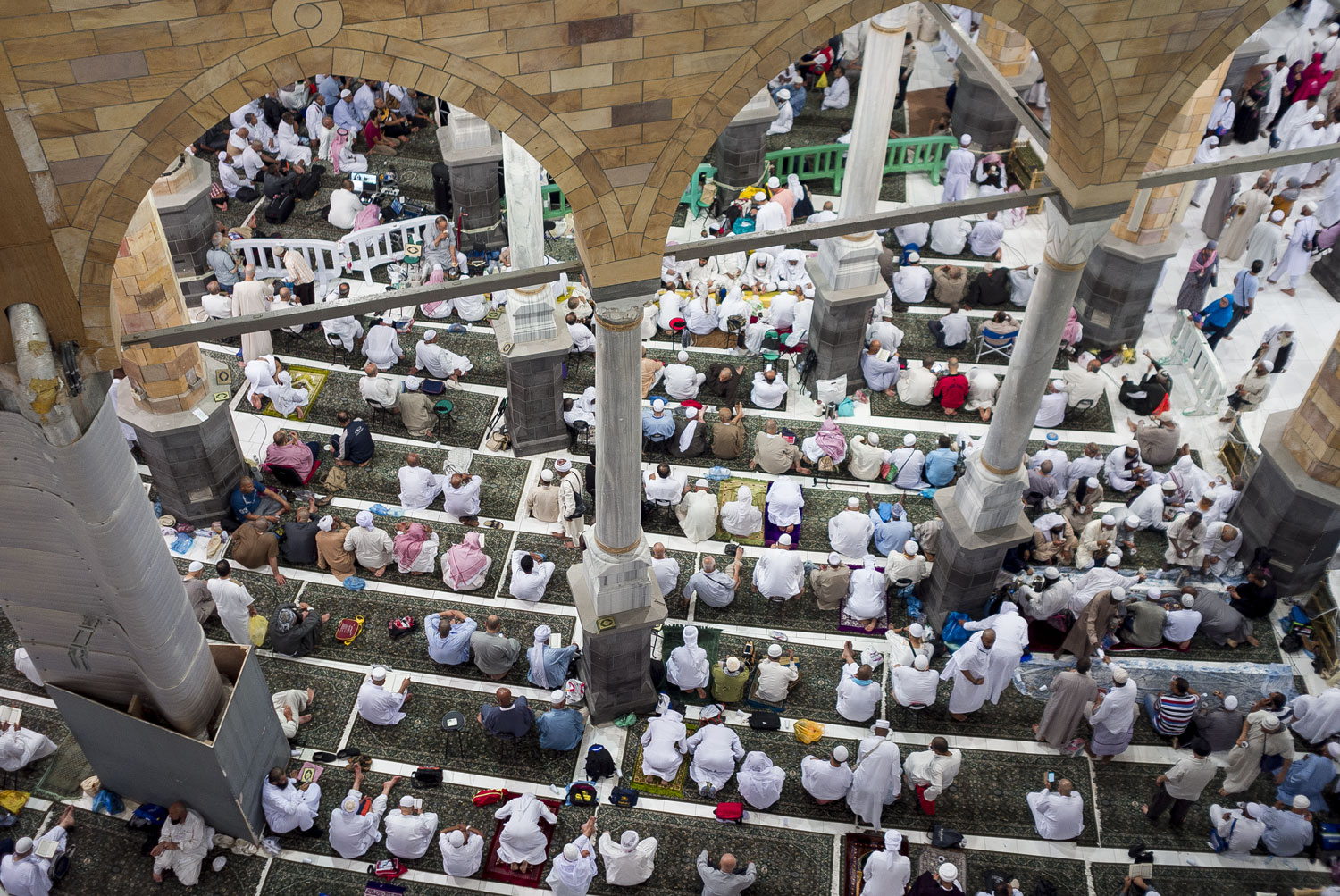
Violator
The Forbidden Mosque has three floors, a basement, and a roof.
The multi-level structure was built for one purpose — to accommodate the maximum number of pilgrims circling around the Kaaba.
Long time ago, the mosque was one-story and the ritual circumambulation around the Kaaba could only be done on the ground. Then there were more and more pilgrims, and the crowds around the Kaaba became thicker. To avoid overcrowding, the authorities of Mecca built additional floors and declared that going around on them is also counted by Allah.
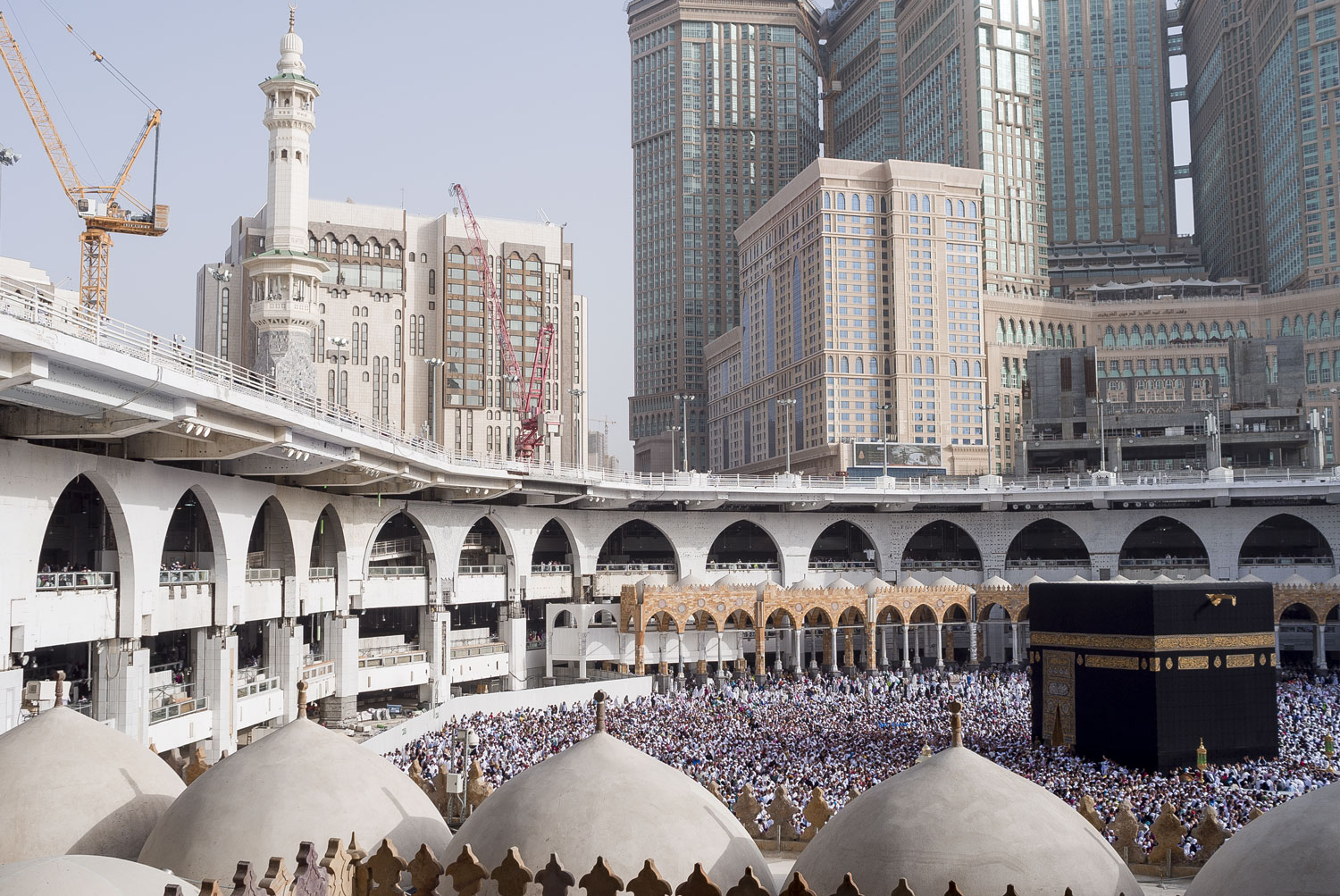
Of course, the circumference of such a bypass is several times longer. Not everyone can make 7 coveted rounds along the expanded radius. That’s why they brought go-karts into the mosque. Now you can just drive around the Kaaba.
I wonder, can a wealthy sheikh perform Hajj by helicopter? What does the Quran say about this?
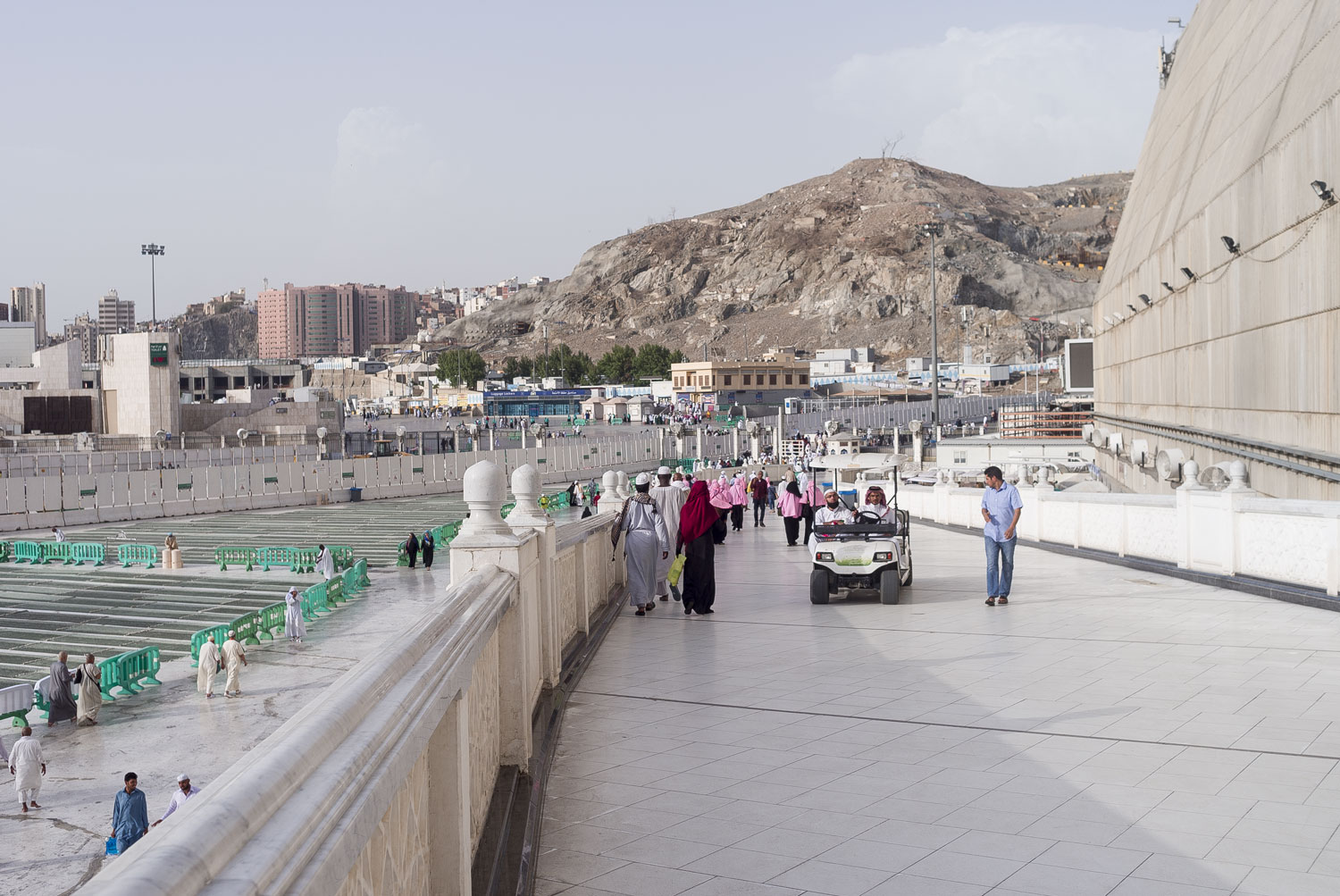
All these tricks did not save Mecca from an excess of people. Such crowds of pilgrims flooded the Hajj that it was necessary to construct two additional rings around the Kaaba. They are specially set up during the Hajj and removed in peacetime.
The mosque itself is being expanded to colossal sizes. Sadly, it can only be expanded in one direction. Skyscrapers have already occupied the other. It is unclear how the Saudis are going to solve the problem of go-rounding the Kaaba. Let people go along the transportation ring around the city?
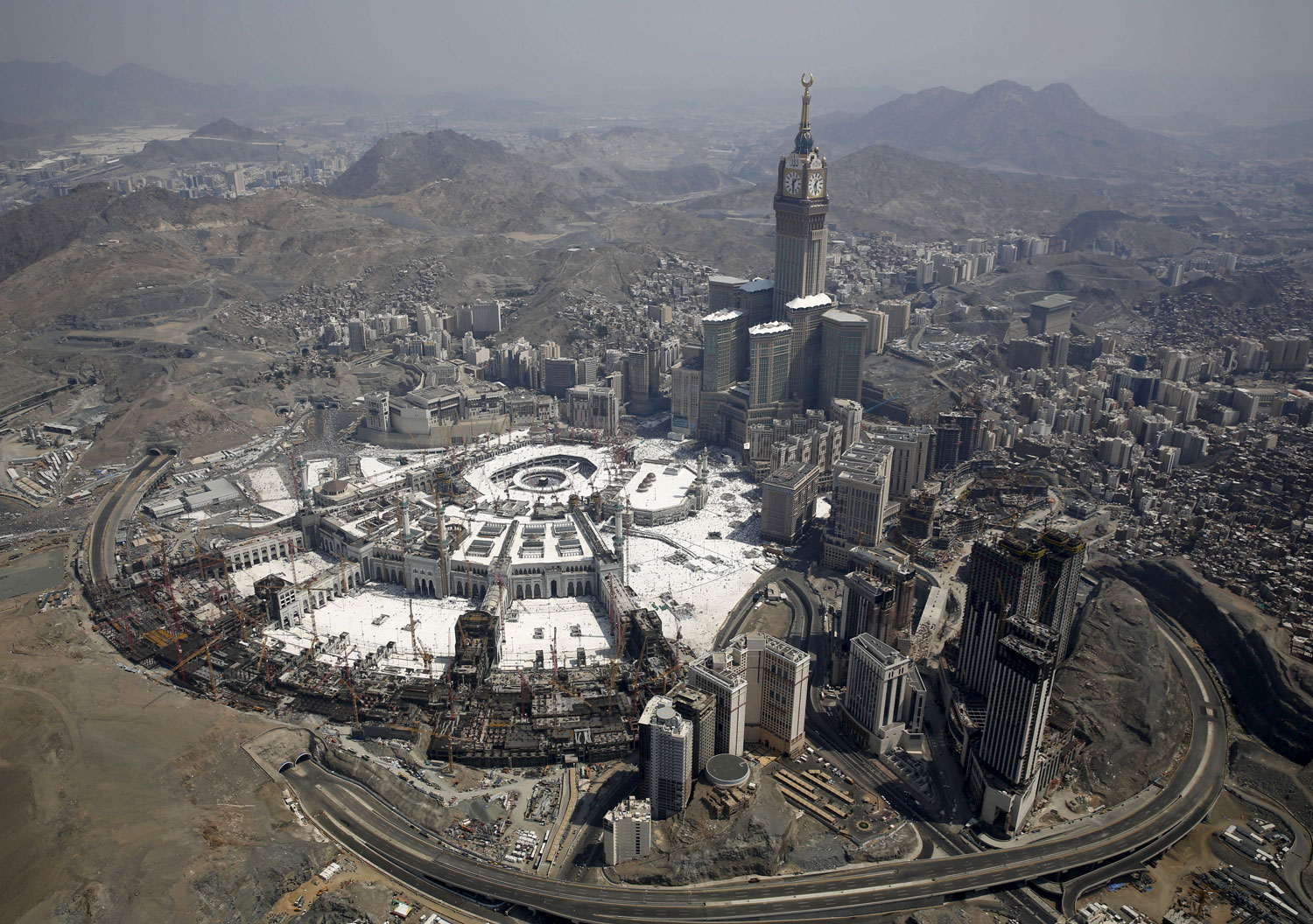
It is very easy to get lost in the mosque. It has so many entrances and exits that I couldn’t find my way to the roof on my own. A janitor agreed to guide me for a few riyals — damn capitalist.
From the roof, it was finally possible to see the skyscrapers in their entirety, with no obstructions.
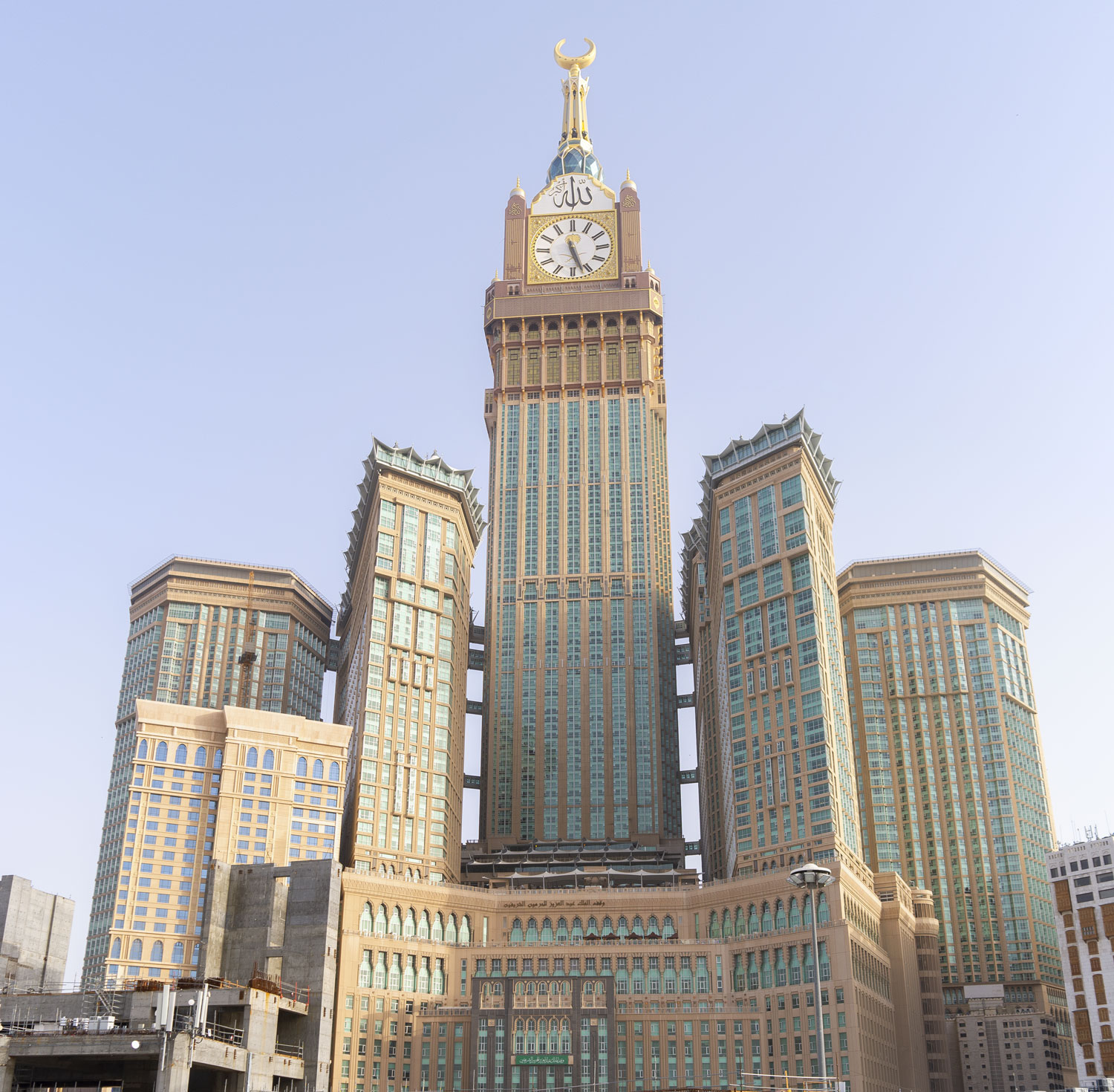
The roof is a secret place in the mosque. Only few people here, and the convenient nooks where you can hide and pray alone. However, the space by the parapet is always taken. Chairs are provided on the roof. Muslims sit at the very edge and watch the endless khorovod below.
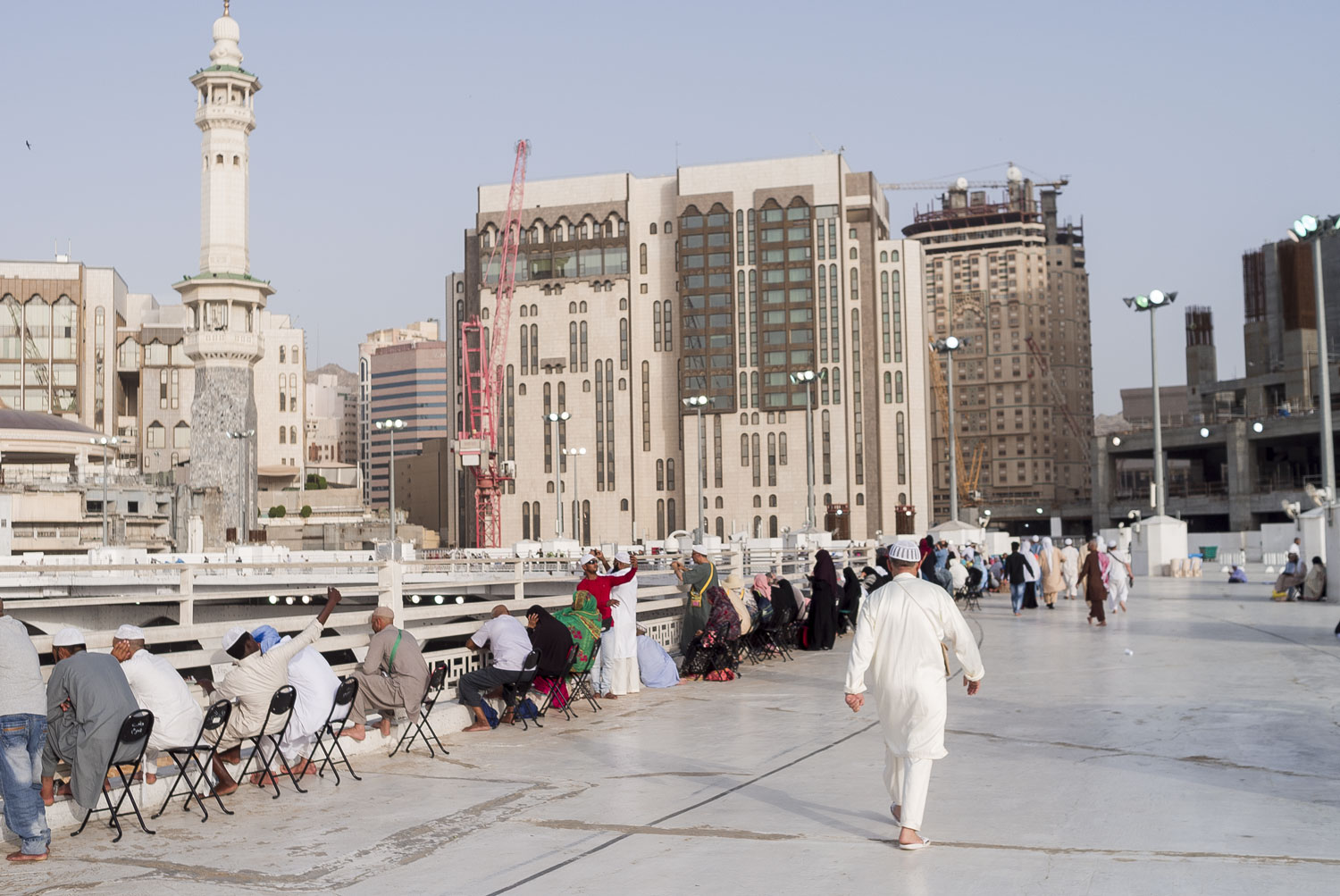
As soon as the muezzin sings and calls the faithful to prayer, they will stand up from their chairs, put them aside, and lay out prayer mats.
Muslims all over the world must to pray five times a day. Not everyone does this. But in Saudi Arabia, a person who does not fall to Allah quintuply a day is a rare exception.
All of Saudi Arabia prays five times a day. Every day. The whole country. How can you film the worshippers if you must stand among them?
Islam does not prohibit praying at home, and many residents of Riyadh, Jeddah, and other cities do so, coming to the mosque only for evening or night prayers. It’s not the same in Mecca. Five times a day, the narrow streets of the city suddenly start to flow with human streams, which gather into rivers on wide streets, and then turn into a tsunami that crashes into the mosque.
It is not necessary to pray exactly on time. Each prayer can be performed within a few hours. Therefore, in principle, prayer time can be missed and made up later. But it is such a shameful deed... A Muslim who wanders the streets during prayer will be looked at disapprovingly. The religious police may even forcibly drag him into the mosque.
For a long time did not I dare to take out the camera during prayer, but on the penultimate day of the trip, I found an loophole.
At noon, the sun beats down mercilessly. The heat is unbearable and there is no shade. Even the Zamzam water heats up in barrels and doesn’t refresh at all. Only a few are willing to pray on the roof until evening, and even coming here is too hot. This is our chance.
A chaos around the Kaaba. The prayer has not yet started.
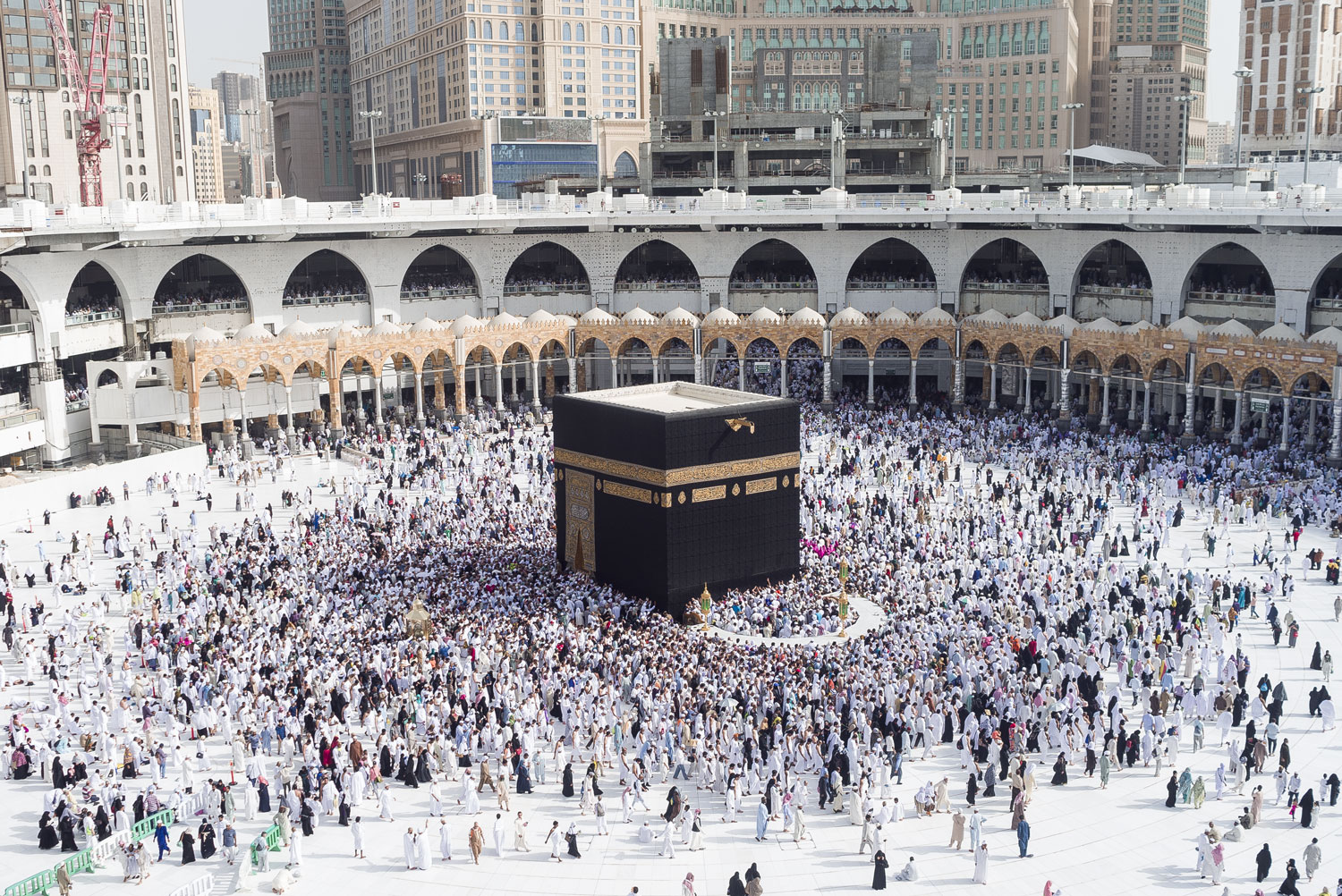
I lay out the mat at the edge of the roof and wait for the performance in unbearable heat of 50 degrees. The white tiles are so hot that you can’t put your foot on the floor. I put a bag under my feet to not get burned.
Closer to prayer, several people come out to the roof and I get into view. I have to roll up my mat and hide in a tricky place between two utility rooms.
Singing is heard. The muezzin, the helard of the mosque, calls on the whole of Mecca: “Hasten to prayer! Hasten to salvation!”
The prayer starts not right now, as people need to reach the mosque and find a free spot. Muslims are given about 10 minutes for this. I get an extra 10 minutes in the heat. Here comes vertigo. I have already had heat stroke dancing around the Kaaba — and I will get it again.
Along with the singing, the Brownian movement around the Kaaba begins to arrange into atomic orbitals. Muslims surround it in concentric circles, preparing for prayer. Entry to the square is closing.
Everyone is ready. The human circle around the Kaaba resembles a Persian handmade carpet. The prayer begins.
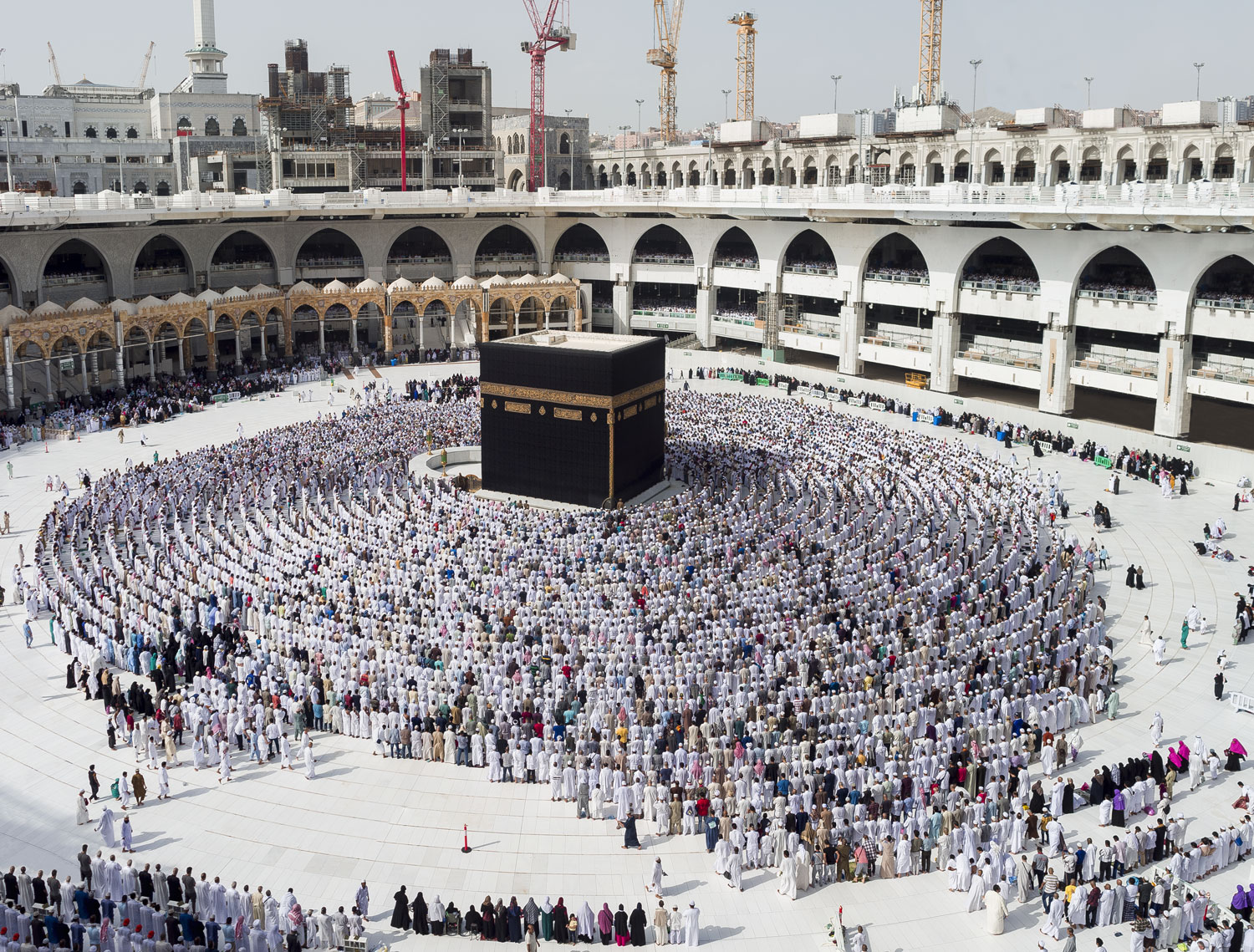
The hands rise to the ears with the words: “Allahu Akbar,” and then at once link up in a obedient pose at chest.
Throughout the mosque, throughout the country, the imam reads the main prayer of Islam:
All praise is for Allah, Lord of all worlds,
the Most Compassionate, Most Merciful,
Master of the Day of Judgment.
You alone we worship and You alone we ask for help.
Guide us along the Straight Path,
the Path of those You have blessed,
not those You are displeased with, or those who are astray.
In response, the choir of worshippers chants “Amen” — just like Christians do.
The hands are raised again upwards, and, repeating “Allahu Akbar,” millions of Muslims fall into prostration — and only I sit on my knees, pulling out the camera from my bag. Focus. Shot.
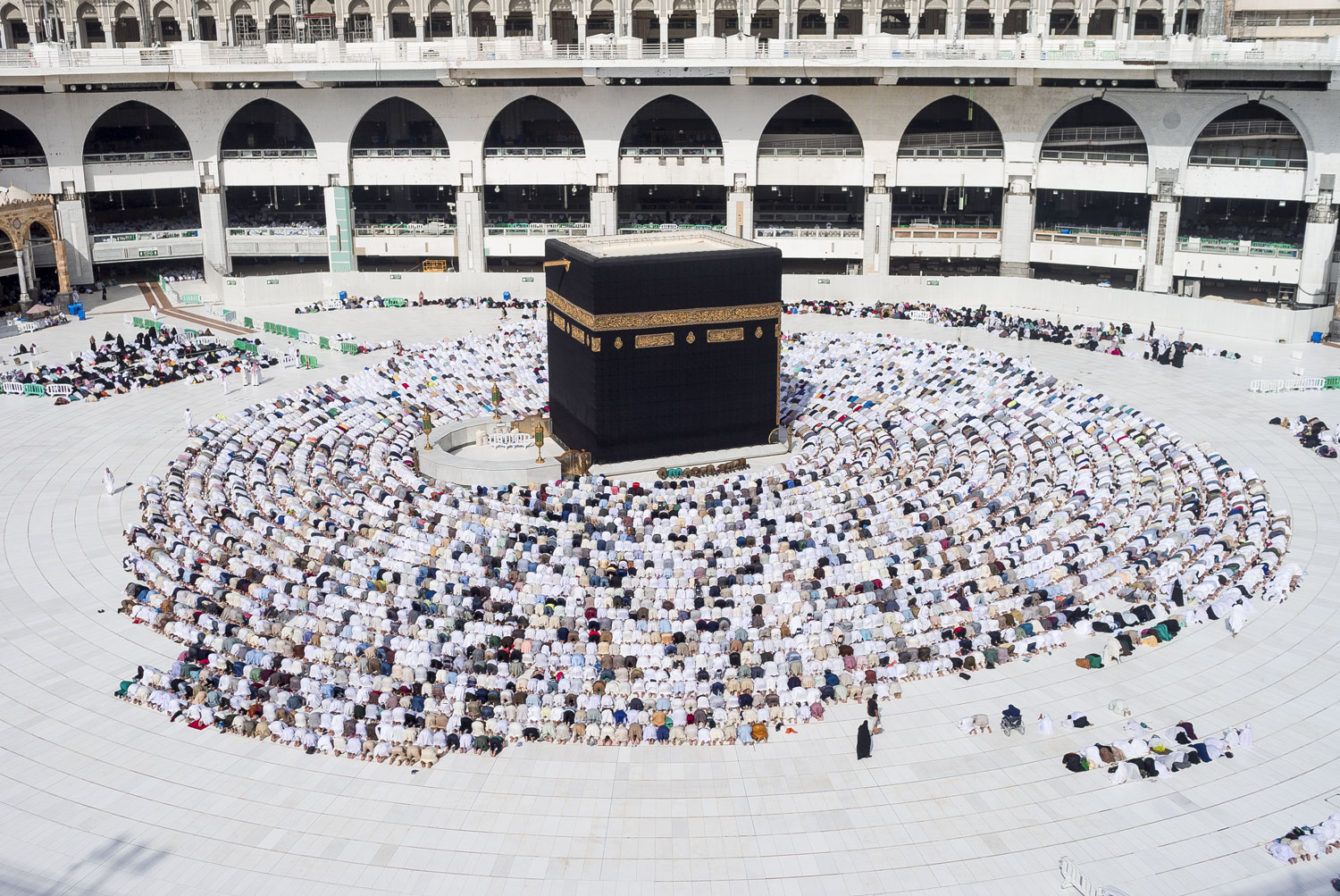
Then forehead to the ground, so that no one could see.
The prayer lasts about five minutes. The whole salah is a repetition of the same actions, usually 2-4 times. Stand up, raise hands, cross them over the chest. Read the prayer. Bow down, holding hands on knees. Then two prostrations, sit — and stand up again. Each cycle is called a rak’ah.
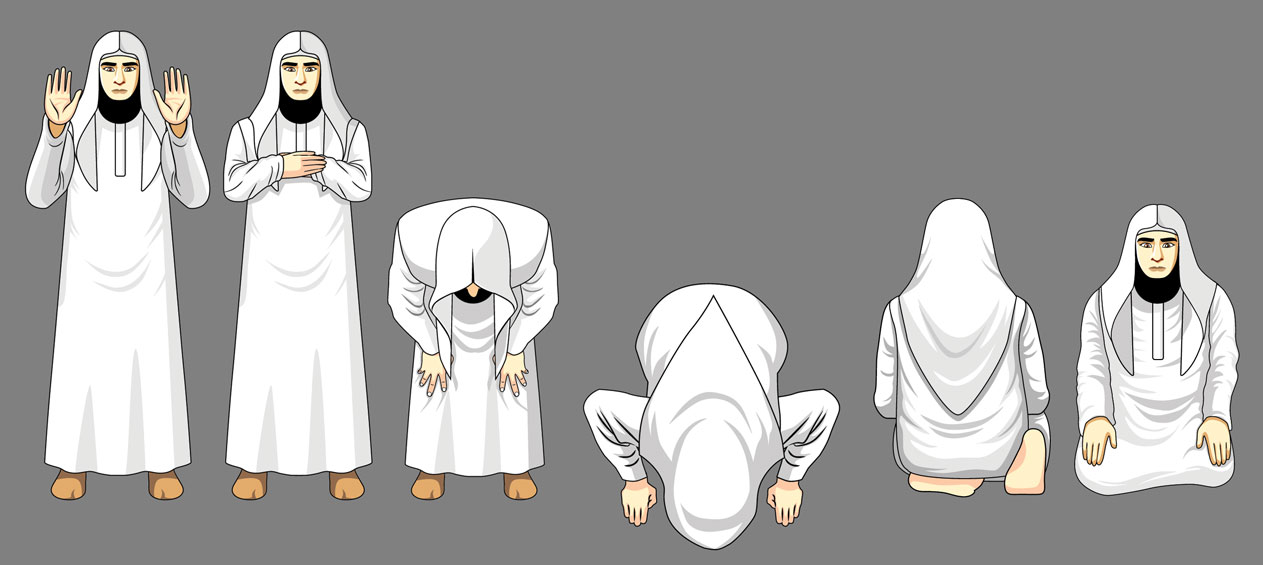
When a Muslim prays at home, he reads short prayers that are easy to memorize. In the mosque, the imam chants long poetic surahs, so one can stay for long in the heat.
I am standing at the edge of the roof, at my last breath. Sweat is dripping down my face, and if I bend over — it pours down like hail to the ground. Multicolored goosebumps jump before my eyes, like TV noise. The ringing in my ears intensifies, and it seems the image starts to float. The straight walls of the Kaaba change angle, reducing it to a two-point perspective.
The prayer ends. Now, sitting down, you must turn head to the right, and say: “Peace be upon you and the mercy of Allah.” Then turn your head to the left and say again: “Peace be upon you and the mercy of Allah.”
The ringing in my ears turns into hallucinations. The imam’s singing slows down, as if the battery in the cassette player is dying. “Peace be upon you and the mercy of Allah. Peace be upon you and the mercy of Allah!” — the last verse sounds like two people singing, interrupting each other, lingering and quaveringly dissolving in Islamic vocals.
As soon as the last syllable of the prayer is sung, the concentric orbitals around the Kaaba break up into separate atoms that slowly scatter in all directions. Pilgrims sitting closest to the golden doors jump up from their seats and in a crazy medley, chasing each other rush towards the Black Stone.
The fanatics are reaching out hands to it again, elbowing those who are behind; scrabbling with their nails and pulling back the faces of those who got ahead.


